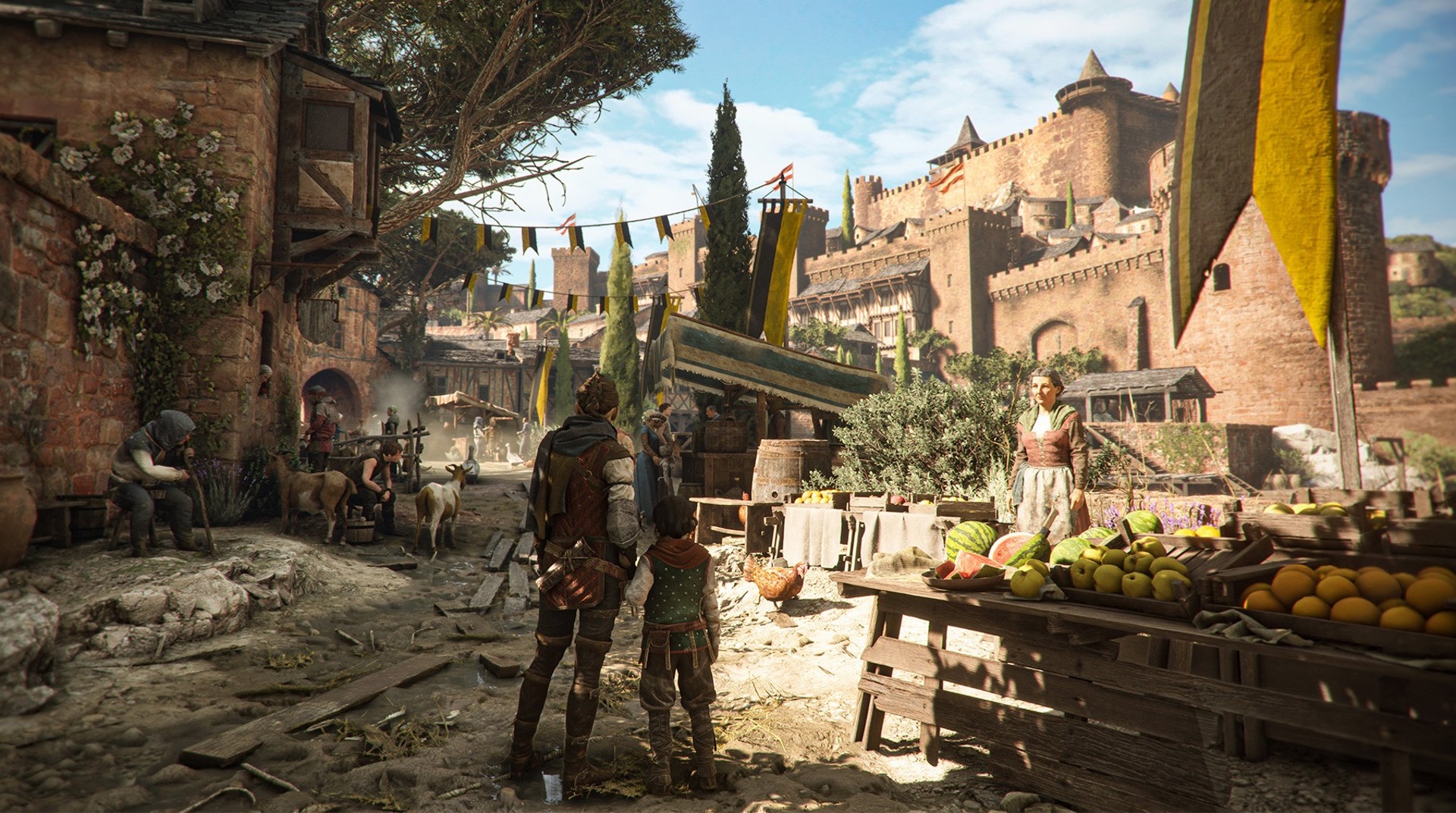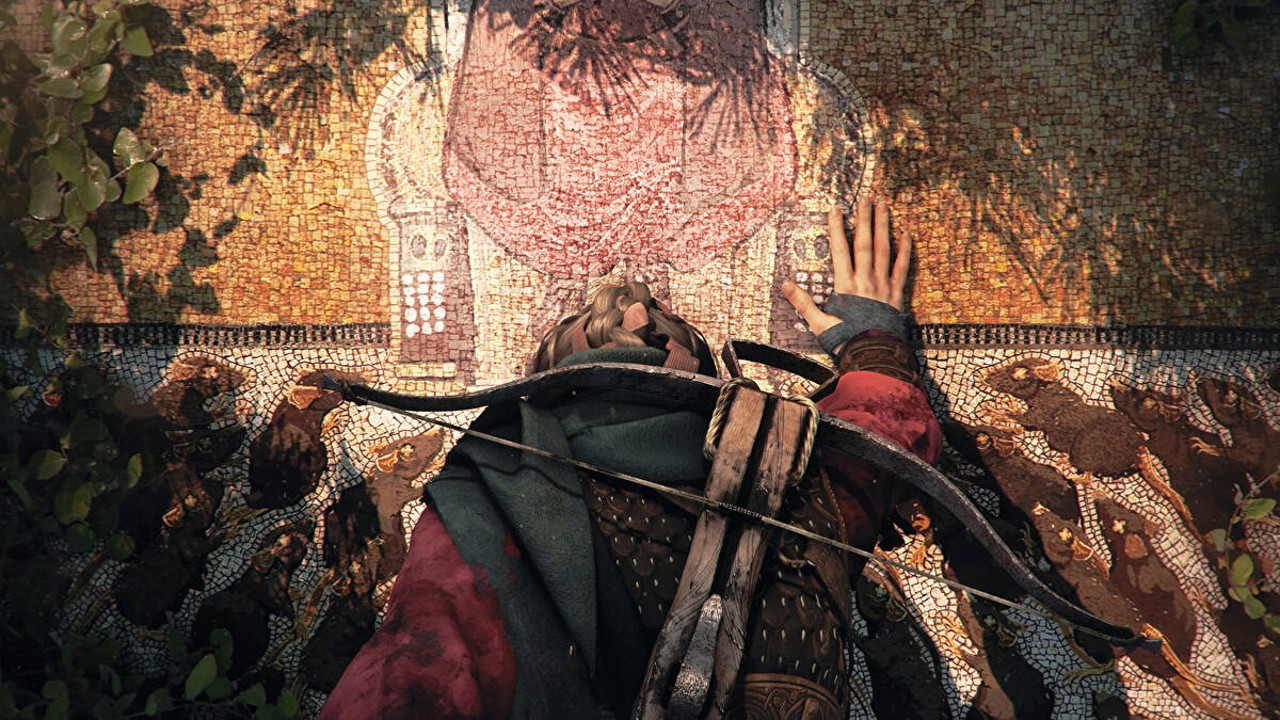At the end of A Plague Tale: Requiem, I looked down to realize I had a white-knuckled death grip on my controller. It wasn’t because of an intense action sequence or anything like that. Instead, it was the unnerving emotional roller coaster I’d just been on.
A Plague Tale: Requiem is a special sequel, one that improves on nearly every aspect of the original while still retaining the unique core elements of its predecessor. It’s quite simply one of the most enthralling games of 2022, with a story that packs a serious emotional gut punch.
Requiem picks up six months after A Plague Tale: Innocence, with Amicia, Hugo, their mother, and the alchemist Lucas searching for a new place to call home, all while trying to learn more about the supernatural power that runs through Hugo’s veins. As the Macula starts to take hold of Hugo, hordes of rats appear once again, sending the siblings on a quest to find a mysterious island from Hugo’s dreams.
Just like its predecessor, Requiem is primarily a narrative adventure game, even with its widely expanded gameplay options. This means story and narrative always take center stage, but that’s absolutely a good thing here. Right out of the gate, Requiem isn’t afraid to throw Amicia and Hugo into the deep end of life-threatening situations. To its credit, Requiem knows when to alternate between high-intensity set pieces and quiet characters moments, seesawing back and forth between the two with ease.
Clocking in at roughly 18 hours, this campaign gives you a lot more time to get to know the siblings and some fantastic new characters. The intense bond between Amicia and Hugo is the central pillar around which the narrative revolves, and the two make some valuable new allies in the process, like the fantastically-written Sophia, a savvy pirate captain that always has a quip or two.
While there are plenty of twists and red herrings packed into the story, what really stands out is how the narrative doubles as an allegory for healing trauma. Amicia and Hugo are children that have been thrust into a cold and uncaring world, and much of Requiem’s story dives into the mental strain that causes, and the way said trauma can dominate our lives and decisions.
The story is elevated by presentation and strong writing. A Plague Tale: Requiem is an utterly gorgeous game, with some almost uncannily good character animations. Part of the heartbreak is seeing these utterly gorgeous locations filled with life turned into grey husks by the plague. The voice cast also deserves an extra mention as, across the board, the actors give some incredible performances, with Amicia’s being a stand-out.
As the narrative unfolds, Requiem’s gameplay is largely split into three major sections: stealth/combat segments where you deal with enemies, puzzle sections where you navigate through hordes of rats, and more open-ended exploration sequences where you, well, explore.
Stealth is again a major focus, with segments essentially acting as massive areas with multiple routes and options for either sneaking past or taking down enemies. With that in mind, Amicia has far more combat options available this time around, some familiar and some new.
Her primary weapon is a sling that can instantly take out unarmored enemies with headshots, but she can also craft different types of ammo with unique effects. Ignifer can light up braziers but also be combined with jars of tar to create explosions that engulf enemies in flames; tar can also kindle a fire to push rats back even further.
Meanwhile, Odoris can be used to attract hordes of rats to certain points, clearing the way for a short period of time. But Amicia’s best piece of new equipment is a deadly crossbow that can take out enemies in one shot and launch flaming arrows into wood to create safe spots from the rats.
Alchemical tools are crafted from materials you find lying around the environment, and exploration is key to keeping yourself stocked on not only materials but also crossbow bolts and knives for those instant kills when combat is the only option.
Hugo’s abilities also play into things more, as well; if there are rats around, you can hold use a kind of “rat vision” that reveals enemy positions. Hugo can also control small groups of rats and use them to devour enemies gruesomely.
What surprised me most about Requiem’s gameplay is how much of a viable option straight-up combat can be, and there are multiple segments where it’s even required. While you can play the entire game like a pure stealth experience, later on, I found myself having more fun by systematically eliminating every enemy in an area through a combination of Amicia’s crossbow and alchemical tools.
That being said, Requiem falters in its later chapters, which put a heavy focus on combat. So while the combat itself is solid, the lack of stealth in these latter segments creates a tangible imbalance and feels somewhat antithetical to the game’s overall style.
There are two unique systems that can affect gameplay in Requiem: a dynamic skill system and an upgrade system to improve your equipment. The skill system is entirely new in Requiem and works similarly to something like The Elder Scrolls V: Skyrim.
Amicia’s skills are split into three categories that enhance stealth, combat, and alchemy, but the only way to raise these skills is by actually using that play style. If you sneak around a lot, you might unlock a skill that reduces the sound of Amicia’s footsteps, but if you directly confront enemies more often, you might unlock a skill that lets you push enemies into fires or rat hordes.
You aren’t locked into any of the three paths, and you’ll constantly be gaining experience in all three categories as you utilize those playstyles.
The upgrade system, on the other hand, is much more straightforward; you’ll find tools and pieces scattered around the environment that you can use to upgrade everything from Amicia’s sling and crossbow to your alchemy storage capacity, similar to the system found in the Innocence.
Exploration is tremendously encouraged, not only to find those upgrade materials but also the handful of collectibles scattered across the various chapters. There are multiple points where Requiem opens into massive explorable areas crammed with little details to find, and these sections are a nice change of pace overall, especially since Requiem nails its collectibles by tying them directly into the narrative.
A Plague Tale: Requiem Review — The Bottom Line
Pros
- A harrowing emotional tale backed up by phenomenal performances.
- A wealth of gameplay options that let you choose your own style.
- Utterly gorgeous world and environment.
- Interesting collectibles that all tie into the narrative.
Cons
- Latter part of the game focuses too heavily on combat.
- Pacing feels a tad sluggish in the middle.
A Plague Tale: Requiem is an enthralling sequel that makes real refinements to the original. Its narrative manages to feel both utterly crushing and incredibly hopeful at the same time. And the degree of freedom in its gameplay options means there’s never a dull moment.
Running from tidal waves of rats never ceases to be terrifying, but there’s a strong message underlying everything in Requiem, too. It’s easy to see how this could go down as one of the greatest sequels of all time, alongside the likes of Assassin’s Creed 2 or Uncharted: Among Thieves.
[Note: Focus Entertainment provided the copy of A Plague Tale: Requiem used for this review.]











Published: Oct 14, 2022 6:26 PM UTC